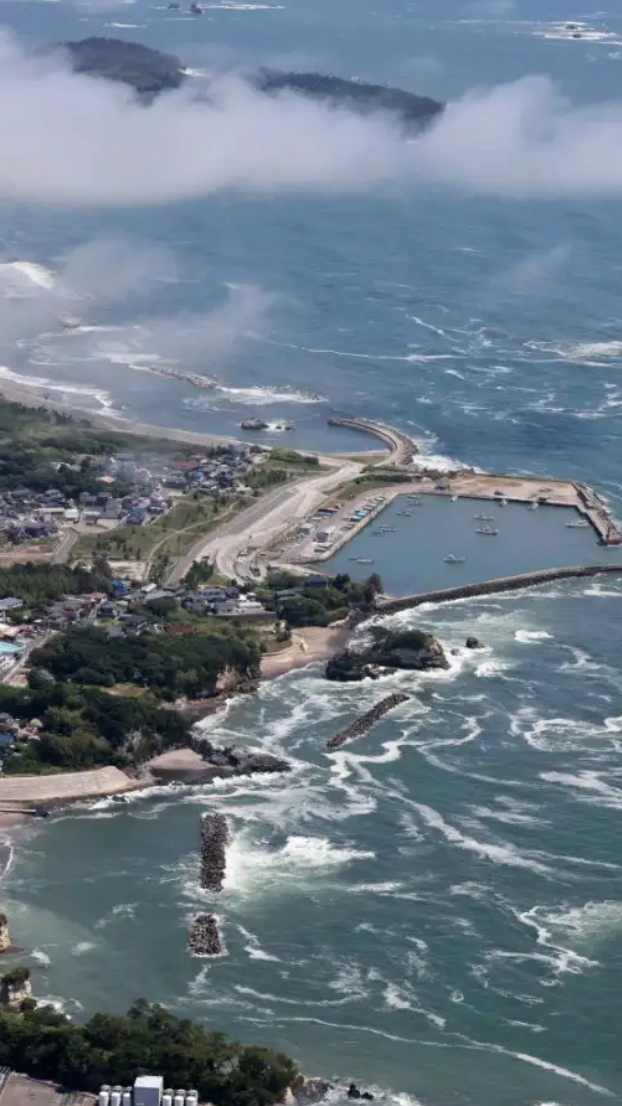Petropavlovsk-Kamchatsky, Russia — On 29 July 2025 at 8:25 a.m. local time, the earth beneath Russia’s Far East let loose a seismic growl not heard in over seven decades. Residents of Petropavlovsk-Kamchatsky were shaken from their routines — and quite literally from their beds — as a colossal earthquake struck just off the Kamchatka Peninsula. Windows shattered, traffic halted, walls groaned, and for a few eternal seconds, it felt like time stood still.
Preliminary estimates clock the quake at 8.8 magnitude — the strongest to hit the region since 1952, and among the top six largest ever recorded globally. Kamchatka, perched like a powder keg on the Pacific Ring of Fire, has seen its fair share of seismic activity. But this? This was different. This was a warning shot from the planet itself.
The immediate aftermath was grim but could’ve been far worse. Dozens were injured, mostly during hasty evacuations. A kindergarten collapsed — mercifully empty at the time. Emergency sirens wailed across the peninsula. Within hours, over 2,000 people were evacuated from vulnerable coastal towns. Russia declared a state of emergency and urged citizens to stay away from the shorelines. So did the US in Hawaii and many more countries as the risk of tsunami is high. Kamchatka was just ground zero. The ripples spread fast — both in the ocean and across international borders.
The Ring of Fire Awakens
The Ring of Fire is Earth’s most explosive neighborhood — a vast, horseshoe-shaped zone of tectonic chaos encircling the Pacific Ocean. It’s where 90% of the world’s earthquakes happen and where three-quarters of all active volcanoes are found. Basically, if the Earth has a temper, this is where it throws its tantrums.
The quake’s undersea epicenter triggered tsunami alerts that stretched from Japan to Hawaii, from Alaska to California. Japan scrambled to evacuate nearly 2 million people. Sirens wailed through Hokkaido. Waves — though relatively modest at 1 to 1.6 feet — crashed into the northern shores. Authorities, scarred by the 2011 Fukushima disaster, weren’t taking any chances: nuclear facilities were cleared, and people fled to higher ground.
Across the Pacific, Hawaii sounded its alarms, urging residents to leave beaches and head inland. Traffic choked escape routes in Honolulu. Meanwhile, the U.S. West Coast — from Oregon to Alaska — remains on alert, eyes glued to tide gauges and seismographs.
As panic gripped cities, the internet played its favorite post-disaster game: decoding nature’s “early warning system.” Videos emerged showing five beluga whales mysteriously beached on Kamchatka’s coast just a day before the quake. In another clip, sea lions in unusual numbers were seen fleeing the beaches. Some online sleuths call it coincidence. Others? Not so sure.
And then came the prophecy. A now-viral 1999 Vanga titled “The Future I Saw” had eerily predicted a devastating earthquake and tsunami in July 2025. Once dismissed as fiction, the story is now trending across Asia, with uncanny timing that has conspiracy theorists grinning and seismologists groaning.
I wish it ended there, but we are seeing some very strange stuff happening in the US as well. Just as the world was catching its breath from Kamchatka, reports started rolling in from across the globe — specifically, from the American heartland.
Yellowstone National Park, which sits atop a supervolcano, is suddenly showing signs that aren’t exactly comforting. Park rangers and tourists alike have reported herds of bison, elk, and even bears moving en masse away from geothermal areas. Videos show animals bolting northward, away from the caldera, as if something beneath their hooves had whispered “run.”
Yes, this could be seasonal movement. Yes, animals are unpredictable. But combine that with the Kamchatka quake, the Ring of Fire lighting up like a Christmas tree, and Yellowstone’s own history of dormancy and potential explosiveness, and the questions start to pile up.
Scientists have long said that a Yellowstone eruption is statistically unlikely any time soon. But the last time it blew — about 640,000 years ago — the North American continent changed forever. Is this animal behavior just coincidence? Or instinct? No one's sounding alarms. Yet. But seismologists are watching Yellowstone more closely than they were last week.
The Earth is moving — and it’s doing so loudly.


